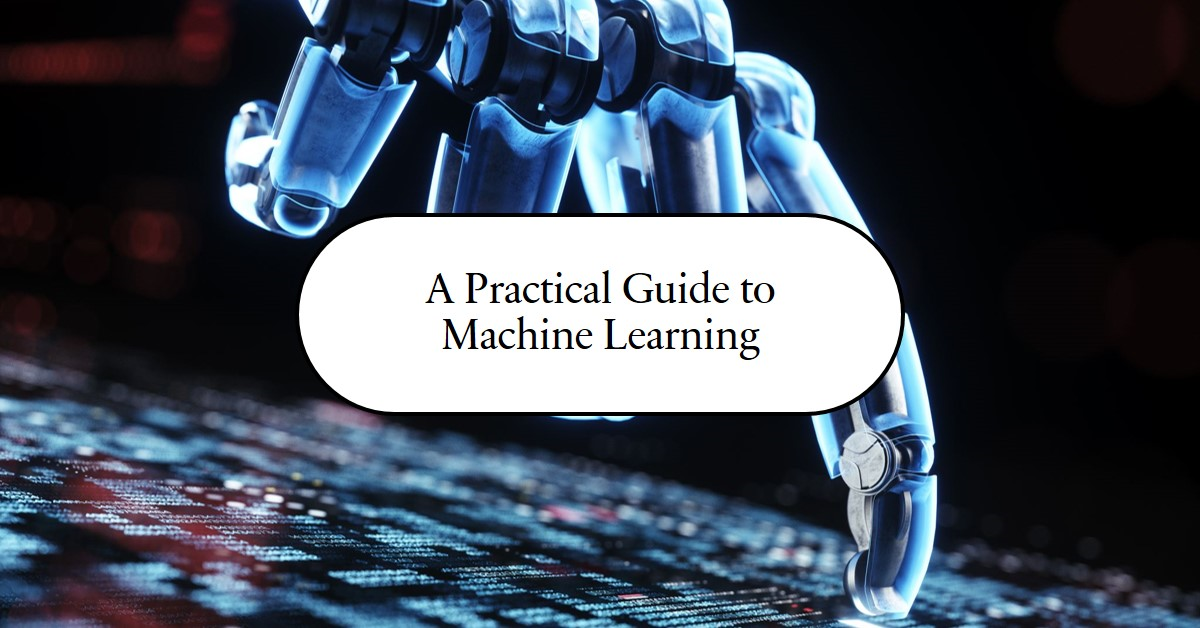
Implementing a Machine Learning Solution: A Practical Guide
Introduction
Machine Learning (ML) is transforming industries by enabling smarter decision-making, automation, and predictive insights. Whether you’re an aspiring ML engineer, a data scientist, or a business leader exploring AI-driven solutions, understanding the ML lifecycle is crucial for successful implementation.
In this article, we’ll break down the ML lifecycle, discuss how to frame ML problems, explore pre-built models, and review essential tools used in training models.
1. Breaking Down the Machine Learning Lifecycle
A well-structured ML lifecycle ensures efficiency and accuracy. Let’s look at the key stages:
?? Problem Definition & Data Collection
Before building an ML model, define the problem you want to solve. Collect relevant data from structured (databases) or unstructured sources (text, images, videos). Data preprocessing, including cleaning, handling missing values, and removing outliers, is essential at this stage.
?? Exploratory Data Analysis (EDA)
EDA helps in understanding data patterns, correlations, and distributions. Feature engineering plays a vital role in transforming raw data into meaningful input variables.
?? Model Selection & Training
?? Model Evaluation
Assess model performance using key metrics:
?? Deployment & Monitoring
Deploying an ML model involves hosting it as an API, integrating it into applications, or running it on edge devices. Post-deployment, monitor performance, detect model drift, and retrain as needed.
?? Continuous Improvement
Machine learning is an iterative process. As new data becomes available, models need to be updated to maintain accuracy and relevance. MLOps practices help in automating retraining pipelines and scaling models efficiently.
2. Framing Machine Learning Problems
Proper problem formulation is key to success in ML projects. Here are common ML problem types:
?? Classification
Predicting categorical labels (e.g., Spam vs. Not Spam, Fraud Detection, Disease Diagnosis). ?? Algorithms: Logistic Regression, Random Forest, Neural Networks.
?? Regression
Predicting continuous values (e.g., Stock Price Forecasting, Sales Prediction). ?? Algorithms: Linear Regression, Ridge Regression, XGBoost.
领英推荐
?? Clustering
Grouping similar data points (e.g., Customer Segmentation, Anomaly Detection). ?? Algorithms: K-Means, DBSCAN, Hierarchical Clustering.
?? Reinforcement Learning
Training AI agents using rewards and penalties (e.g., Robotics, Self-Driving Cars). ?? Algorithms: Q-Learning, Deep Q Networks (DQN).
?? NLP & Computer Vision
3. Identifying a Pre-Built Model
Why build from scratch when you can leverage pre-trained models? Pre-trained models save time, reduce computational costs, and improve accuracy with minimal effort.
?? When to Use Pre-Trained Models?
? Limited labeled data for training. ? Resource constraints. ? Need for quick deployment with high accuracy.
?? Popular Pre-Trained Models
Domain Pre-Trained Model Use Case NLP (Text) BERT, GPT, T5 Chatbots, Sentiment Analysis Computer Vision ResNet, EfficientNet, YOLO Object Detection, Image Classification Speech Recognition Wav2Vec, DeepSpeech Voice Assistants, Transcription Recommendation Systems Neural Collaborative Filtering Personalized Recommendations
?? Fine-Tuning for Customization
Fine-tuning allows adapting pre-trained models by retraining certain layers with custom datasets. Example: Fine-tuning BERT for financial sentiment analysis instead of general text classification.
4. Understanding Tools Used to Train a Model
Choosing the right tools accelerates the ML workflow.
?? ML Frameworks
Framework Best For TensorFlow Deep Learning, Large-scale ML PyTorch Research-focused ML, Dynamic Computation Graphs Scikit-Learn Classical ML algorithms XGBoost Gradient Boosting for structured data
?? Cloud-Based ML Platforms
Platform Features Google Vertex AI AutoML, Model Deployment, GCP Integration AWS SageMaker Fully managed ML lifecycle, Built-in Algorithms Azure ML Drag-and-drop ML, ML Pipelines
?? Model Training & Optimization Tools
Tool Use Case MLflow Experiment tracking, Model Registry Weights & Biases Model monitoring, Visualization Optuna Hyperparameter tuning
Final Thoughts
Building a machine learning solution requires structured planning, from problem identification to deployment and maintenance. Leveraging pre-trained models and powerful ML tools can streamline the process, leading to faster, more efficient, and more accurate solutions.
Are you working on an ML project? What challenges have you faced? Let’s discuss in the comments! ??
#MachineLearning #AI #DataScience #MLOps #DeepLearning #CloudComputing #ArtificialIntelligence #BigData
Jay S., your comprehensive guide illuminates the path to successful ML implementation. Have you considered exploring industry-specific case studies? ?? #AIInnovation